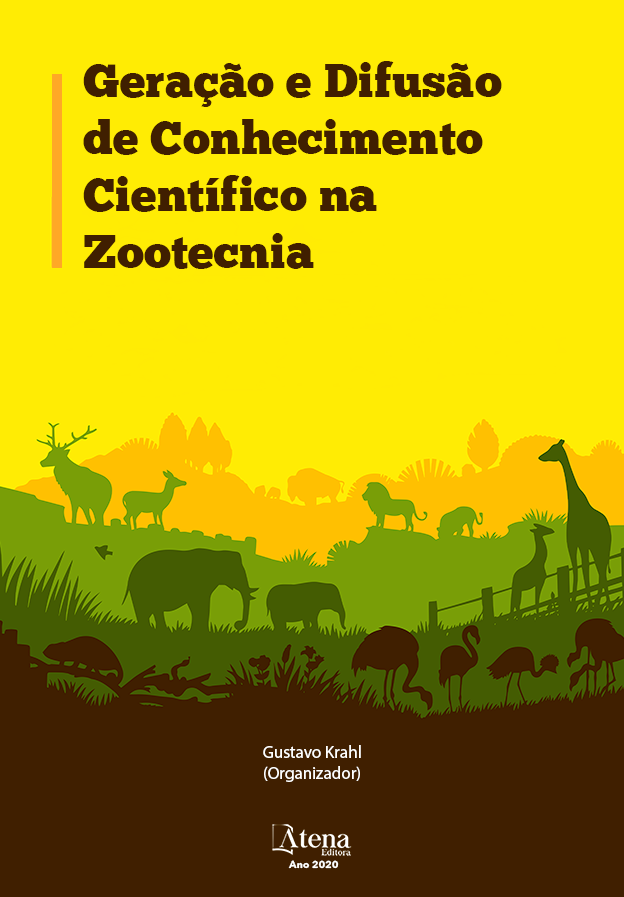
CÚRCUMA E SORGO NA ALIMENTAÇÃO DE CODORNAS JAPONESAS: BIOMETRIA DAS TÍBIAS E FÊMURES
Objetivou-se avaliar os efeitos da utilização de dietas a base de milho e sorgo com a inclusão de níveis de cúrcuma sobre a biometria das tíbias e fêmures aos 60 e 90 dias de vida. Foram utilizadas 210 codornas fêmeas da espécie Coturnix coturnix japônica com idade de 50 dias de vida, uniformizadas pelo peso corporal distribuídas em gaiolas de arame galvanizado. O delineamento utilizado foi inteiramente casualizado (DIC), com seis tratamentos e cinco repetições com sete aves por repetição. Tratamentos consistiram em controle: ração basal de milho e farelo de soja e ração à base de sorgo e farelo de soja com adição de níveis de 0%, 0,5%, 1,0%, 1,5% e 2,0% de cúrcuma. O experimento teve a duração de 90 dias, sendo realizados três ciclos de produção, com 28 dias cada ciclo e 6 dias de adaptação. Para a realização da análise biométrica dos fêmures e das tíbias, uma ave de cada repetição foi selecionada e eutanasiada por deslocamento cervical, posteriormente os ossos foram removidos das pernas esquerdas, limpos de todo tecido aderente, pesados e medidos. Não foi observado efeito significativo (p>0,05) pelo teste de Dunnett para a biometria das tíbias e dos fêmures aos 60 e 90 dias de vida. Também não houve efeito significativo (p>0,05), pelo teste de Tukey para os tratamentos à base de sorgo com a inclusão de níveis crescentes de cúrcuma sobre a biometria óssea. Conclui-se que a utilização de rações a base de sorgo com a inclusão do nível de até 2% de cúrcuma não proporciona efeitos adversos sobre a biometria das tíbias e fêmures aos 60 e 90 dias, não influenciando na redução do índice de Seedor, o que comprova que as aves se mantiveram em perfeito equilíbrio ósseo.
CÚRCUMA E SORGO NA ALIMENTAÇÃO DE CODORNAS JAPONESAS: BIOMETRIA DAS TÍBIAS E FÊMURES
-
DOI: 10.22533/at.ed.1942020086
-
Palavras-chave: Açafrão, Coturnicultura, Índice de Seedor, Ossos.
-
Keywords: Saffron, Coturniculture, Seedor Index, Bones.
-
Abstract:
The objective of this study was to evaluate the effects of using diets based on corn and sorghum with the inclusion of levels of turmeric on the biometrics of the tibiae and femurs at 60 and 90 days of life. 210 female quails of the species Coturnix coturnix japonica were used, aged 50 days old, uniformized by body weight distributed in galvanized wire cages. The design used was completely randomized (DIC), with six treatments and five repetitions with seven birds per repetition. Treatments consisted of control: ration based on corn and soybean meal and ration based on sorghum and soybean meal with addition of levels of 0%, 0.5%, 1.0%, 1.5% and 2.0 % turmeric. The experiment lasted 90 days, with three production cycles, with 28 days each cycle and 6 days of adaptation. To perform the biometric analysis of the femurs and tibias, one birds from each repetition were selected and euthanized by cervical dislocation, then the bones were removed from the left legs, cleaned of all adherent tissue, weighed, and measured. There was no significant effect (p> 0.05) by Dunnett's test for tibial and femur biometrics at 60 and 90 days of life. There was also no significant effect (p> 0.05), by the Tukey test for sorghum treatments with the inclusion of increasing levels of turmeric on bone biometry. It is concluded that the use of sorghum-based diets with the inclusion of up to 2% level of turmeric does not have adverse effects on the biometry of the tibiae and femurs at 60 and 90 days, not influencing the reduction of the Seedor index, the which proves that the birds remained in perfect bone balance.
-
Número de páginas: 14
- Thiago Ferreira Costa
- Weslane Justina da Silva
- Lorrayne Moraes de Paulo
- Julia Marixara Sousa da Silva
- Fabrício Eumar de Sousa
- Fabiana Ramos dos Santos
- Cibele Silva Minafra
- Alison Batista Vieira Silva Gouveia


